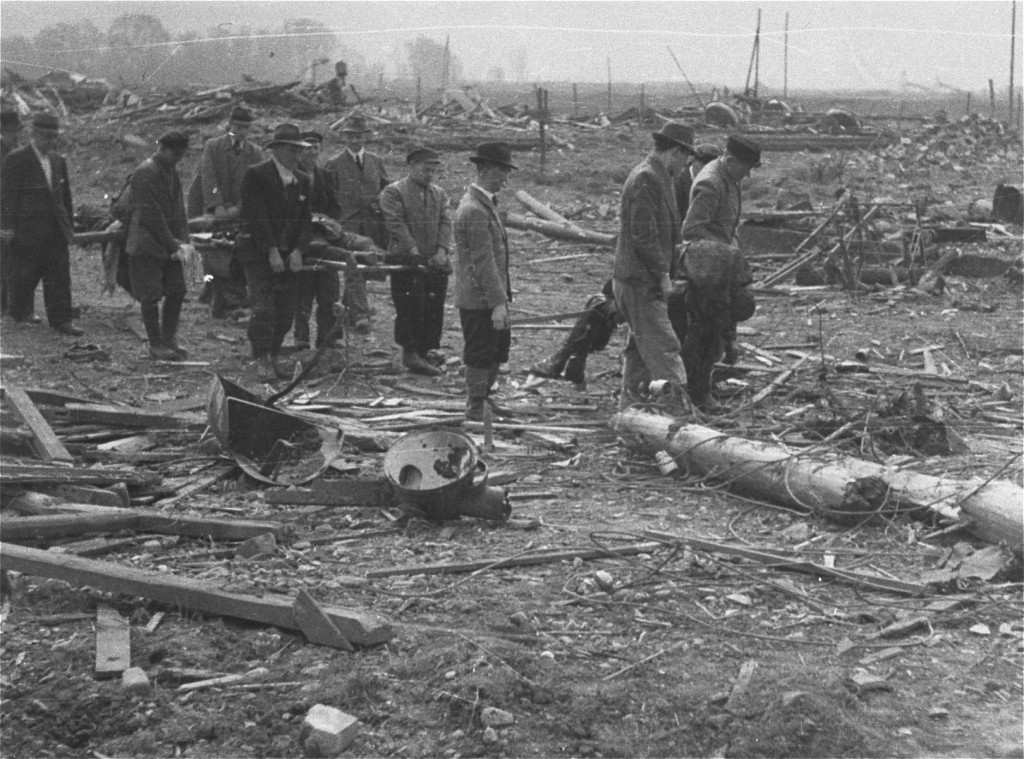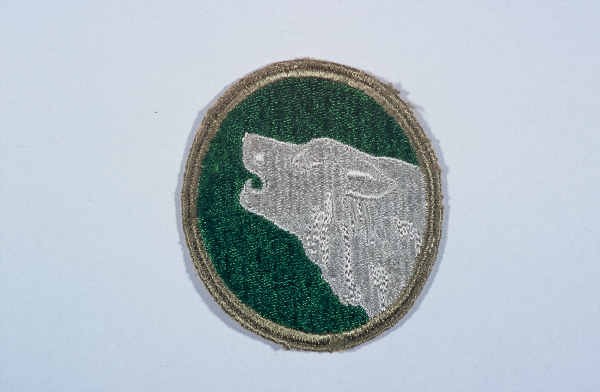
The 104th Infantry Division during World War II
In 1985, the United States Holocaust Memorial Museum and the US Army Center of Military History began a program to honor US Army divisions that took part in the Allied liberation of Nazi camps. The US Army Center of Military History defines a liberating division as one whose official records show its presence at a camp within 48 hours of the first soldier’s arrival. The 104th Infantry Division is among the 36 US divisions that have been recognized to date.
Key Facts
-
1
US, British, Soviet, and Canadian troops encountered concentration camps and other sites of Nazi crimes as they advanced across Europe in 1944 and 1945.
-
2
The Allied soldiers liberated sick and starving camp prisoners from Nazi tyranny. They also provided them with food, clothing, and medical aid.
-
3
The United States Holocaust Memorial Museum and the US Army Center of Military History have recognized 36 US divisions for their role in the liberation of Nazi camps.
104th Infantry Division Campaigns during World War II
Activated in 1942, the 104th Infantry Division landed in France in September 1944, a few months after the Allied invasion of western Europe on D-Day (June 6, 1944). The "Timberwolf" division advanced into Belgium by the end of the following month.
In November, the unit was already approaching the German city of Aachen. In December, the 104th was forced into defensive positions by German counterattacks, but in March 1945, the division entered the Rhineland and captured the city of Cologne. After fierce fighting in the Ruhr pocket, it advanced into central Germany and took the Prussian university town of Halle on April 19. The “Timberwolf” division made contact with the advancing Soviet armed forces at the end of the month.
The 104th Infantry Division and the Liberation of Dora-Mittelbau
As the 104th advanced into Thuringia, the unit overran Nordhausen and the Dora-Mittelbau concentration camp on April 11, 1945. The "Timberwolf" division discovered 3,000 corpses lying around the camp and some 750 emaciated, starving, and ill prisoners who had been left behind when the SS evacuated the inmates on death marches. Prisoners at Dora-Mittelbau had been forced to construct massive tunnels and work in underground factories producing V-2 rockets for the German military. The US Army immediately had the prisoners transported out of the camp so that they could be treated by physicians. US authorities also ordered the local townspeople to bury the dead.
Recognition as a Liberating Division
The 104th Infantry Division was recognized as a liberating unit by the US Army's Center of Military History and the United States Holocaust Memorial Museum in 1988.
104th Infantry Division Battle Casualty Figures
Hundreds of thousands of US servicemen and women died or were wounded in the fight against Nazi tyranny.
The total number of battle casualties for the 104th Infantry Division in the European Theater of Operations during World War II was 4,961. In this case, “battle casualties” includes all personnel who were unable to fight in battle because they were wounded, missing, captured, or killed.
Among the battle casualties suffered by the 104th Infantry Division, there were 1,119 deaths.
104th Infantry Division Nickname and Insignia
The 104th Infantry Division was founded in the Pacific Northwest in 1921. It was activated and underwent training during World War II in the years 1942-43. The nickname, “Timberwolf Division” was chosen in 1924. It reflects the Division's founding history. The "timberwolf” is an animal native to the Pacific Northwest and known for its size and strength. The 104th’s insignia or patch was originally designed in 1924 by illustrator Charles Livingston Bull (1874-1932). It is oval-shaped and depicts a gray wolf’s head on a green background.

Footnotes
-
Footnote reference1.
In the aftermath of World War II, the US Department of the Army compiled casualty figures for US Army personnel. The US government published these figures in 1953. The report listed casualty numbers for the US Army for the period from December 7, 1941 (Pearl Harbor) through December 31, 1946, when US President Harry S. Truman officially declared the end of war hostilities. Army Battle Casualties and Nonbattle Deaths: Final Report, 7 December 1941-31 December 1946, Prepared by the Statistical and Accounting Branch, Office of the Adjutant General, Under the Direction of the Program Review and Analysis, Division of the Comptroller of the Army, O.C.S., (Washington: Department of the Army, 1953), p. 3-4, 84-89.
Critical Thinking Questions
What challenges did Allied forces face when they encountered the camps and sites of other atrocities?
What challenges faced survivors of the Holocaust upon liberation?

